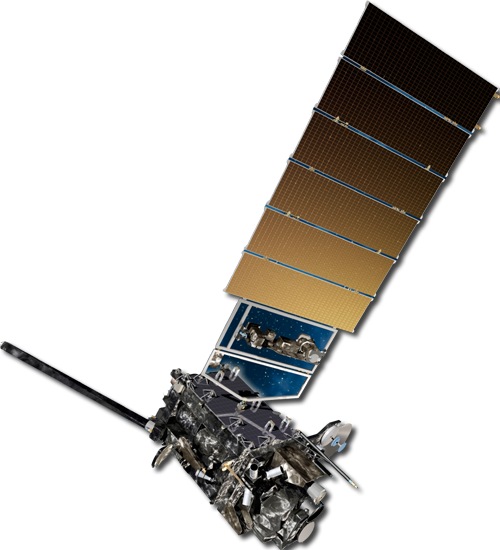The Electromagnetic Radiation

Satellite Radiometers "see" different sections of the Spectrum
Remote sensing devices on weather satellites called radiometers measure radiation of different wavelengths in discrete intervals by using mirrors that scan a region and reflect digital data back to the satellite to be transmitted down to earth for processing. Satellite radiometers can "see" in a wide range of electromagnetic spectral intervals. These intervals are called windows, channels or spectral bands.
GOES imagers measure five spectral bands, one visible and four infrared. We will focus on the
three most common channels: visible light (0.6 microns), longwave infrared (10 to 12 microns),
and a special channel near one of the infrared absorption bands of H20 (6.7 microns)
that we call the "water vapor channel".

Hurrican Earl images in three different channels (spectral bands): Visible (left), Longwave Infrared (middle), and Water Vapor (right)
Better detail or resolution is obtained at smaller wavelengths. The resolution of visible satellite images on GOES (and most TV weather programs) is 1 kilometer, whereas infrared and water vapor images usually have resolutions between 4 and 8 kilometers.
Better detail is also available at closer distances. POES satellites offer resolution on the scale of meters, not kilometers. The typical resolution available from a POES imager is 250 meters, four times more detailed than the current GOES technology.
Polar orbiting satellites provide information about the earth and our atmosphere via the visible, infrared, and microwave regions of the electromagnetic spectrum. The microwave has a great advantage of being able to penetrate clouds, haze, smoke, light rain and snow so microwave radiometers don't need clear skies to produce images. Information about polar ice caps and icebergs are common examples of valuable information provided by microwave radiometers flown on POES. However, the resolution isn't nearly as nice, ranging from 12 to 50 kilometers. This coarseness in detail is due to the low amounts of microwave energy emitted to space and the longer wavelengths of microwave electromagnetic energy.
| 6 / 7 |





